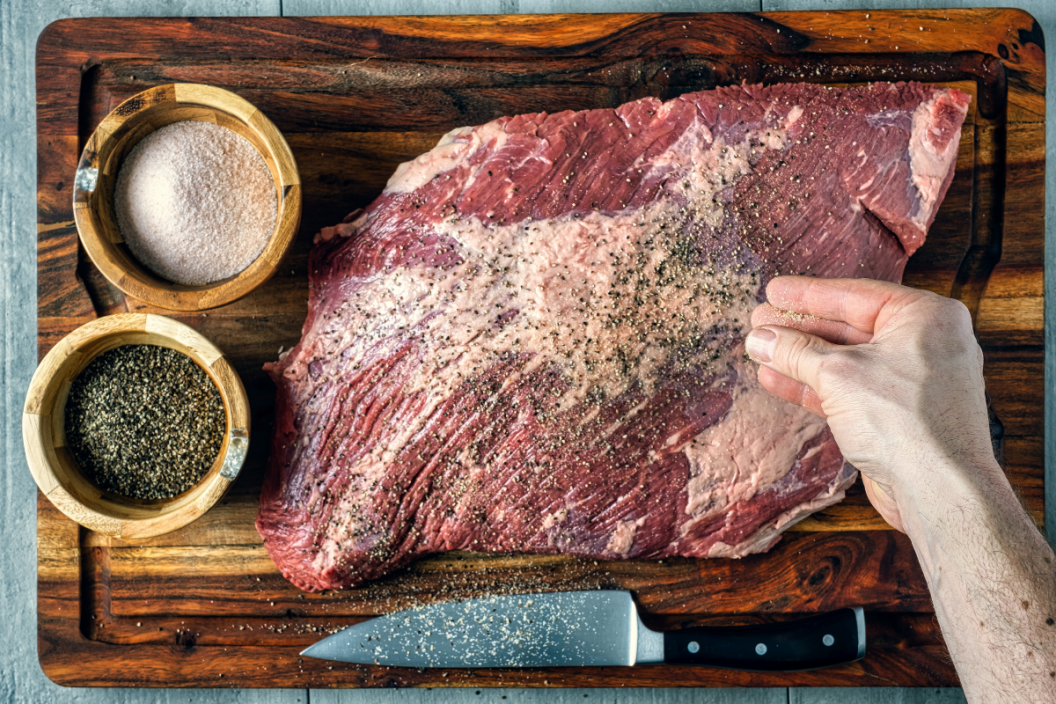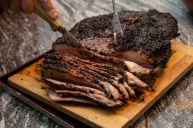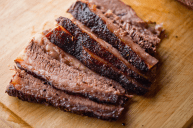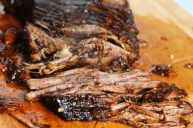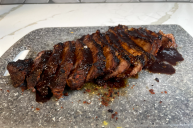When it comes to smoking a brisket like a true Texan pitmaster, one key step involves trimming away some (but not all) of the excess fat. It's possible to smoke a brisket without trimming it first, but you'll leave yourself with a messy slicing job when it's time to serve, and significant amounts of fat dripping on the smoker flames can pose a fire hazard. That's why the trimming process is essential for flavorful and tender brisket. We've got a comprehensive how-to, courtesy of owner and pitmaster Blaine Cooper of B. Cooper BBQ in Austin, TX, co-owner and pitmaster Evan LeRoy of LeRoy and Lewis in Austin, TX, and co-owner and pitmaster Patrick Feges of Feges BBQ in Houston, TX. Here's how to trim brisket the right way, according to the pros.
1. Always trim your own brisket rather than asking your butcher to do it for you
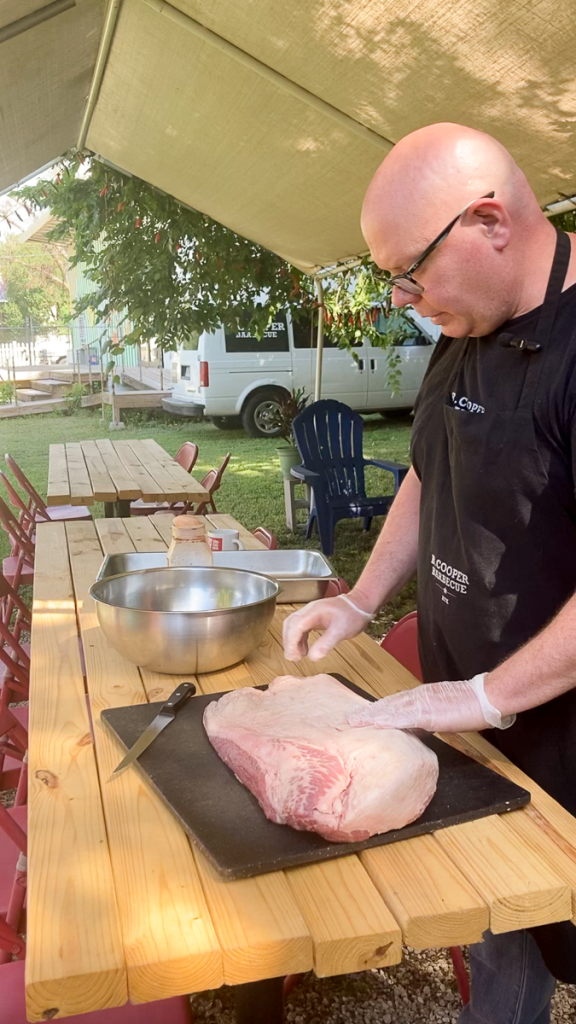
Alexandria Ellison
It may seem like an easier strategy to ask the butcher at your local shop to trim the brisket for you, but our expert sources strongly recommend that you take this task on yourself. "I would not advise folks to ask their butcher to trim their briskets, because butchers aren't usually barbecue people. They might trim off all the fat," warns LeRoy. Feges echoes this concern, adding: "What are the chances that your butcher knows how to trim brisket properly for smoking? I'd say trim it yourself to the specs you like." Also, trimming your own brisket will leave you with an abundance of flavorful fat and meat scraps, which we'll explain shortly.
2. Use a sharp boning knife
As with any other kitchen task that involves chopping or slicing, make sure to use a freshly sharpened knife. A sharper knife is safer for you and will produce a cleaner and more precise cut. While brisket trimming can certainly be done with a chef knife or a utility knife, a boning knife will glide more seamlessly through the meat and fat and will make it easier to get the exact trim level you want.
3. Start by trimming the four sides
Cooper starts his trimming process by flipping the brisket so that the flat, or the meaty side with a top layer of fat (known as the fat cap) is facing up. Then, he uses his knife to trim the fat along the sides and the bottom of the brisket until it takes on a rectangular shape. However, Evan LeRoy does caution against hard corners or angles. "You're looking for almost a pod shape," he says. Basically, aim for a relaxed rectangle without pointy corners or sharp edges, and you'll be all set.
4. Get the fat cap down to ¼" thick
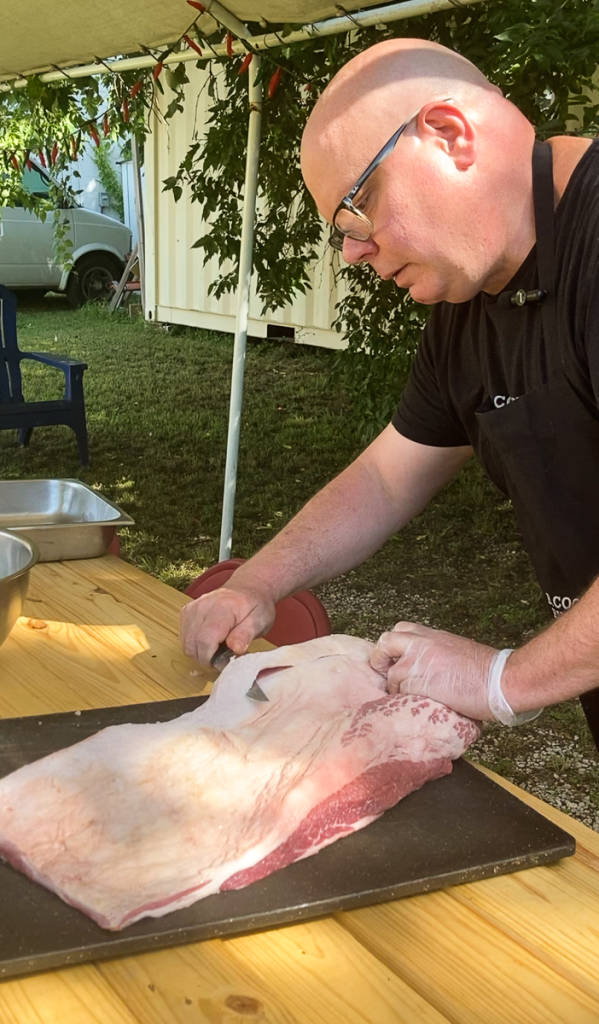
Alexandria Ellison
Next, use the knife to shave down the fat cap until it's about ¼" thick. Our BBQ experts agree that ¼" is the sweet spot; it keeps enough fat on to protect the meat from the heat of the smoker (and therefore prevent it from drying out), but it's not such a large quantity that you need to worry about excess drippage.
5. Trim down the deckle
Flip the brisket over to the other side, which is known as the point. This side will have more dense fat and connective tissue running through it. Look for the deckle, which is a concentrated, raised bundle of fat. You don't need to remove the deckle entirely, but Cooper recommends working your knife under and around it to trim down what you can.
6. Use your knife to clean up any loose pieces of meat
After trimming the fat cap and the deckle, you may notice loose bits of brisket meat hanging off of your cut. Be sure to trim those off, as they will quickly dry out in the smoker and may even incinerate.
7. Whatever you do, don't get rid of your trimmings
Contrary to popular belief, the fat and meat trimmings that come off of a brisket do NOT belong in the garbage can (or in your dog's bowl). Instead, hold onto them and use them for culinary projects in the near future. "All the trimmings can be repurposed. Cube the fat and render it out on the smoker. Smoked beef tallow is magical," says Patrick Feges. LeRoy tells us that he uses his trimmings to make sausage and burgers. "Also, we grind and render the fat to confit our beef cheeks," he says.
